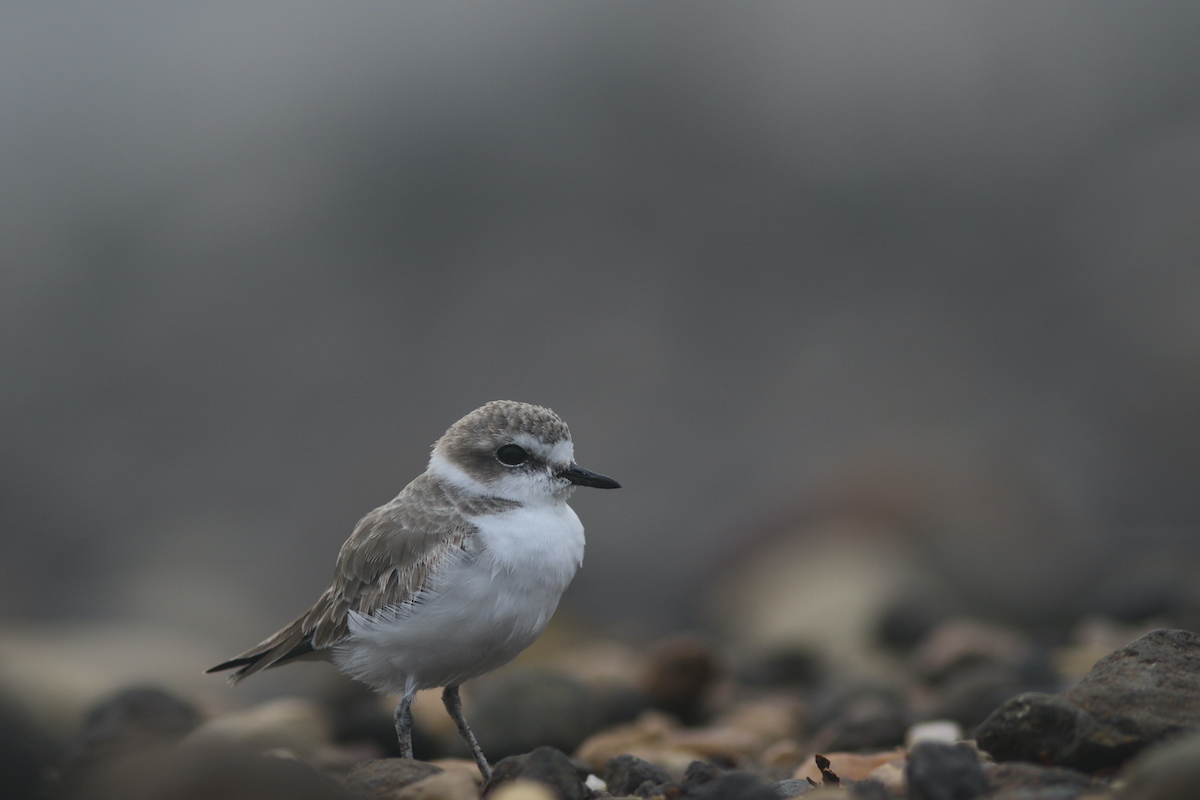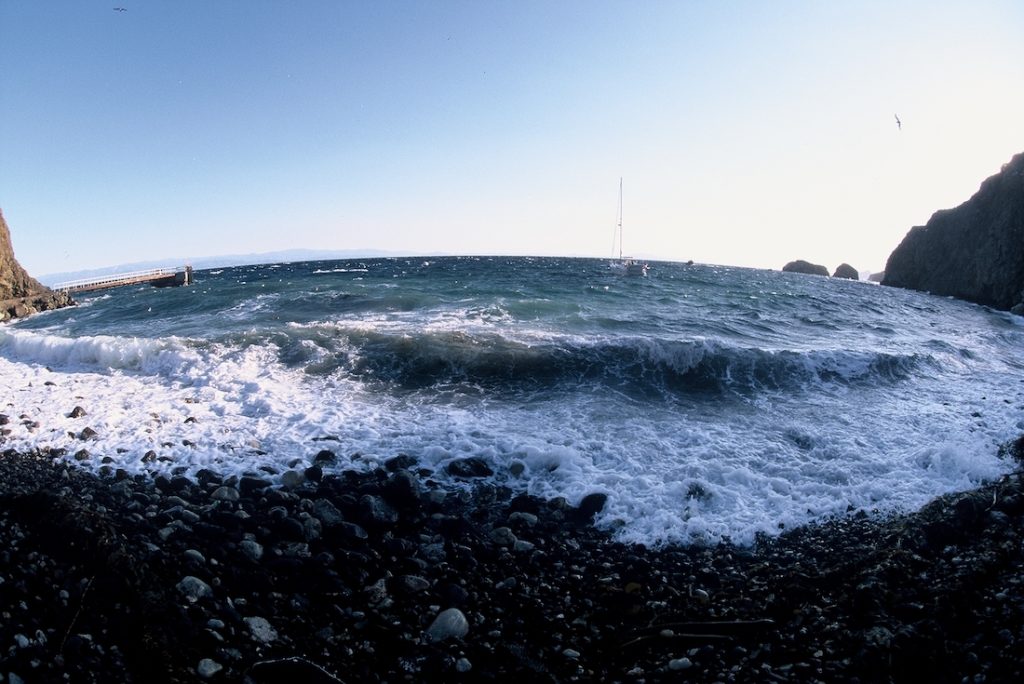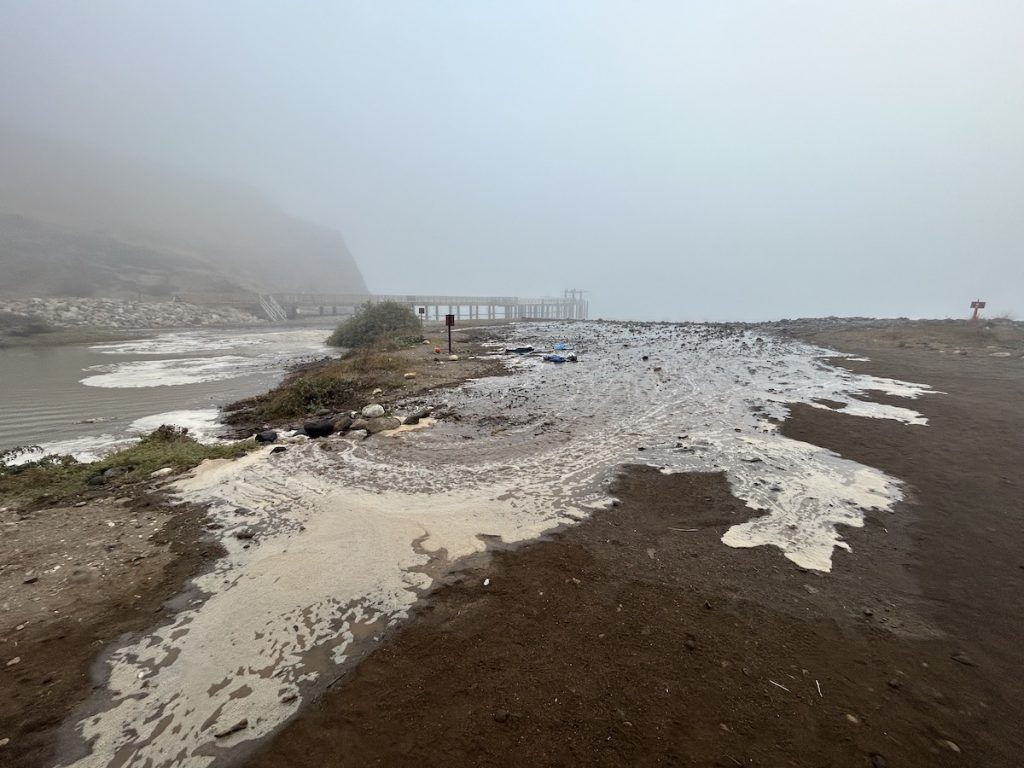The Burly Shorebird of Distant Shores

It was getting dark, and I was tired and hungry. It had been a long, great day, but I needed to land my kayak for the night.
The day had begun at Yellowbanks on the southeast fringe of Santa Cruz Island. From there, I paddled the entire south side of the largest, most diversified isle off the California coast.
When I reached Morse Point on the southwest tip of Santa Cruz, there was still some daylight remaining. After 22 miles of paddling, the easy decision could’ve been to call it a day and paddle across the next morning. However, who knows what the weather would’ve been like, mainly the winds, so I kept paddling. I headed northeast toward Kinton and Near points on Santa Cruz. Those are the shortest distances connecting Santa Cruz and Santa Rosa islands at six miles.
The sea conditions dictated my decision. It was calm and glassy as sunset approached. Ninety minutes later, I touched down at Skunk Point, the long, gritty appendage of the southeast end of Santa Rosa Island. Perpetually wind-whipped and wave-battered, the beach at Skunk Point is a graveyard of driftwood and tangled giant bladder kelp, but as it turns out, it’s home to hardy shorebirds as well.
It was about a 30-mile day kayaking from Yellowbanks to Skunk Point. Needless to say, I was a little stiff when I finally hit the beach. As I tugged and pulled my gear-laden kayak up the steep, sandy berm, the beach in front of me began to shift, or so it seemed.
Tired, hungry, and having trouble seeing as darkness approached, I couldn’t tell what I was looking at. I got down on my hands and knees for a closer look. It was a huge band of western snowy plovers – Skunk Point being one the last, best bastions for these hardy shorebirds. They breed and nest on the remote, windblown beach, finding natural depressions among the pearly white sands and flotsam of debris to drop two or three eggs. Their eggs are speckled and blend in naturally with the rugged islandscape.
Anywhere from 50 to 100 of the tiny shorebirds picked up and moved in unison a very short distance to another part of their coastal island biome. The plovers were bedded down for the night. I too sought out a larger depression against some bleached out driftwood, pitch my tent, grateful for another night under the stars on one of my favorite isles anywhere.
Island Vibrations

Some of my best, most memorable trail runs are the ones at first light on the southeast end of Santa Cruz Island, the most biodiverse island in the Channel Islands National Park.
One of my most recent runs was along the North Bluff Trail in mid-October. Typically, I’m greeted with killer sunrises rising just east of Anacapa Island and craggy Sandstone Peak in the Santa Monica Mountains. Not this day though.
Dewy pea soup fog had persisted for several days. Visibility on the island and from a kayak had been poor at best. I put on my headphones and cranked recently released new versions of the Irish rock band U2’s favorite songs.
The four members of the band, Bono, The Edge, Adam Clayton, and drummer Larry Mullen, made some good use of their time during the pandemic. Each member of U2 picked 10 of their favorite songs and reworked them into incredible acoustic renditions. It’s made trail running seemingly effortless of late.
However, as I ran in heavy mist, and one of those recent, epic tunes, “Where the Streets Have no Name,” filled my head with melodious rhythms, the thunder of pounding surf caught my attention. I pulled my headphones off and could only listen to another strong winter swell. It sounded eerie with no visibility, but I could tell there was a lot of water moving 200 feet below me as I continued my run to the mouth of Scorpion Canyon.
When I arrived, I was blown away by the sea conditions. Standing on the pier at Scorpion Anchorage, I felt the pilings shudder beneath my feet, as six-to-eight-foot northwest swells hammered away at the structure that was complete in February 2023.

Big high tides coincided with the swell, and with each booming set of waves, the surge swept up and over the cobbled berm spilling into the seasonal creek mouth. As I walked the cobble-strewn beach, I could hear and feel the entire beach shifting, the rocky shoreline being remade into another craggy version of itself.
Amongst the ocean’s fury as sea foam percolated and floated over the wave-battered cobble, I was surprised to see a lone western snowy plover standing on the cobble in the surging tide and swell. With utter aplomb, it scampered after little invertebrates following the receding tidal surge. Back and forth it worked the reshaped beach, gobbling up little creatures concealed in the rocky shoreline.
It was the first time I’ve ever seen a western snowy plover at Scorpion Anchorage on Santa Cruz Island. As resident and migratory birds travel, the islands offer a useful respite, a pit stop for the changing of the seasons, and powerful northwest winds.
Whether you’re a tough little plover or a curious kayaker, the islands can be friend and foe, weather dependent of course.







You must be logged in to post a comment.